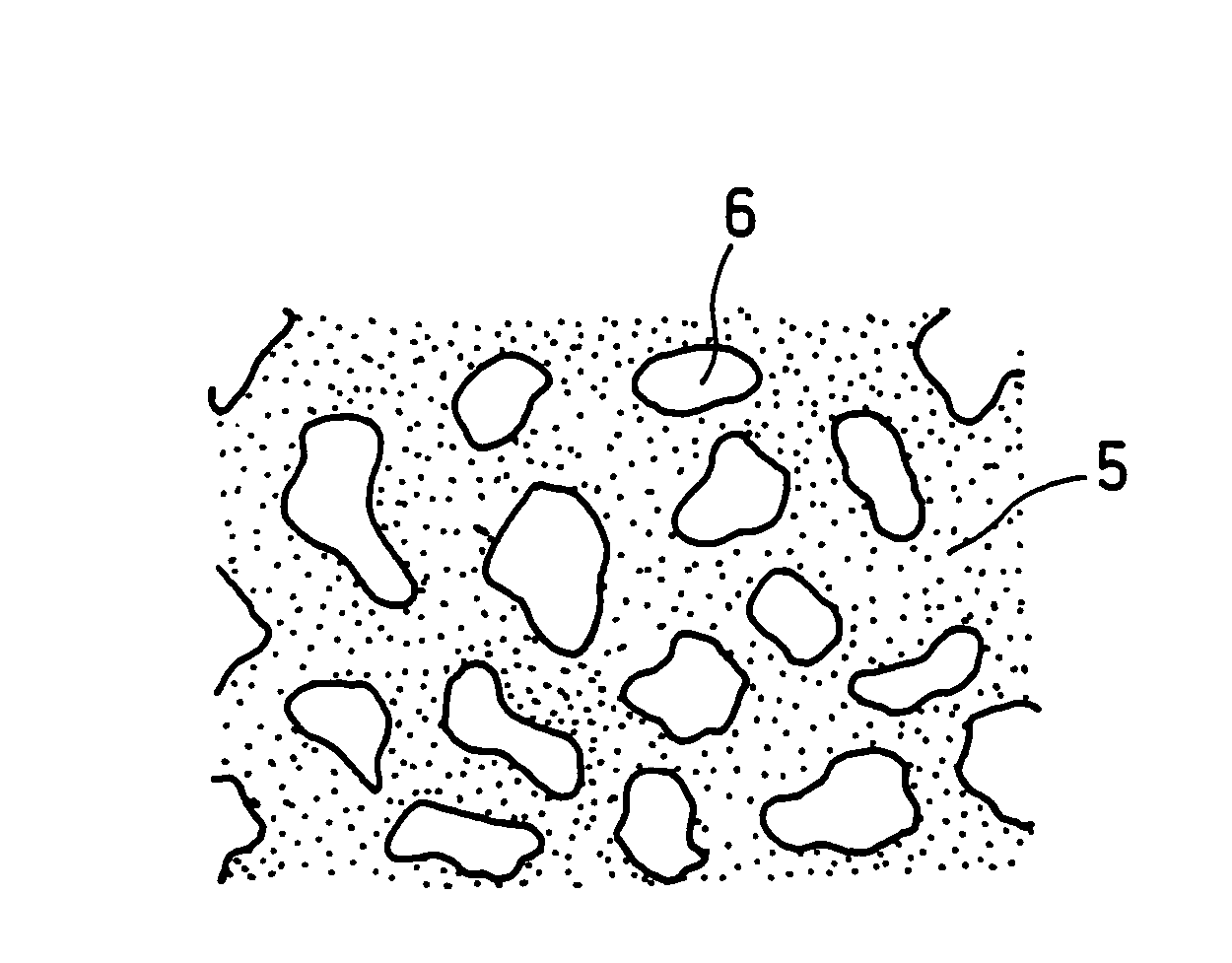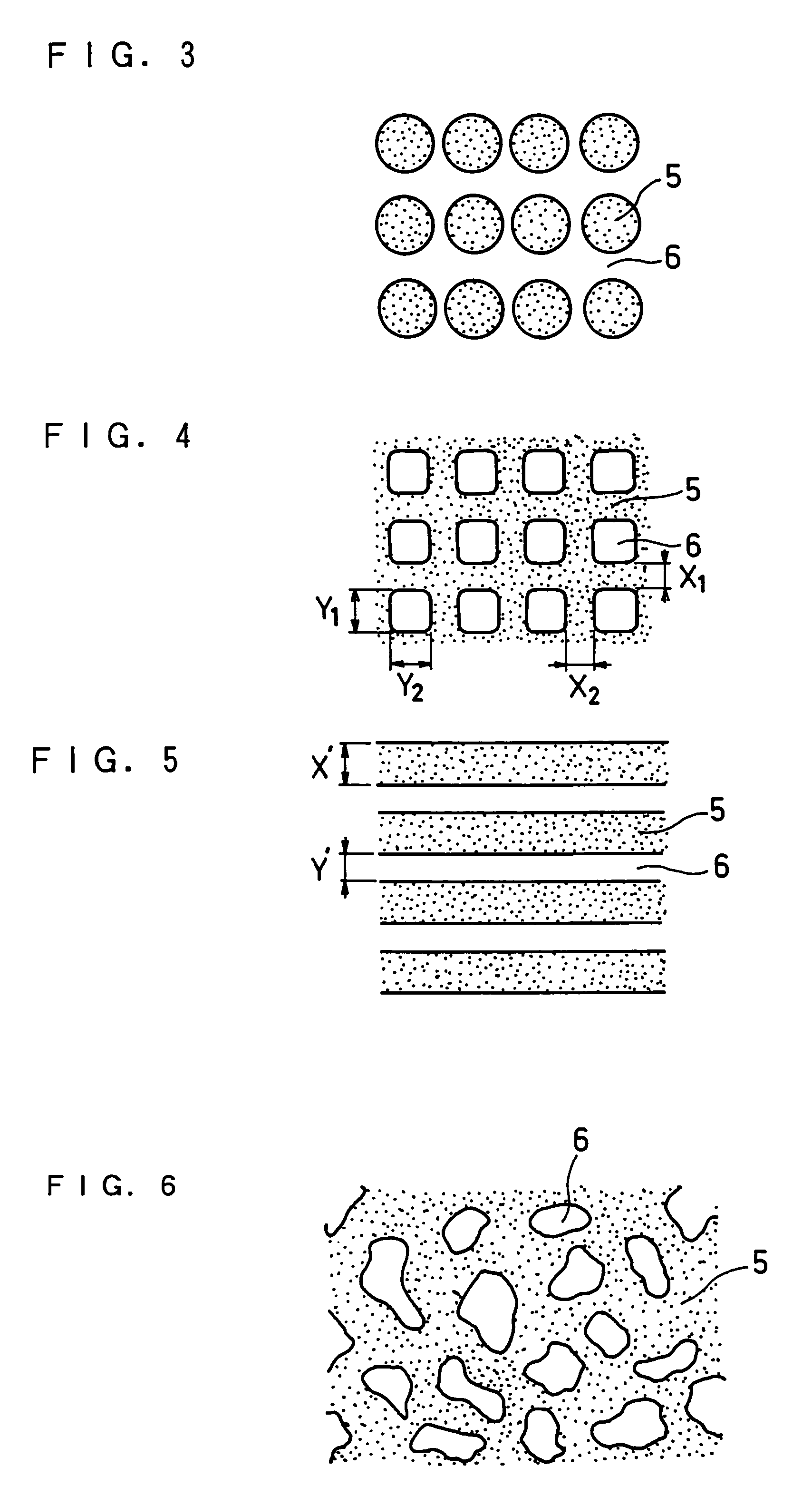Electrode for lithium ion secondary batteries, lithium ion secondary battery using the same, and method for manufacturing the battery
a lithium ion secondary battery and lithium ion battery technology, applied in the direction of cell components, final product manufacturing, sustainable manufacturing/processing, etc., can solve the problems of internal short circuit or nail penetration, the battery can not be secured against internal short circuit or penetration, and the charge-discharge characteristics or heat resistance of the battery drop. , to achieve the effect of excellent capacity, charge-discharge characteristics and heat resistan
- Summary
- Abstract
- Description
- Claims
- Application Information
AI Technical Summary
Benefits of technology
Problems solved by technology
Method used
Image
Examples
embodiments
[0089]The present invention will be described more specifically as follows, based on examples.
example 1
Preparation of the Positive Electrode
[0090]A positive electrode mixture paste was produced by mixing 3 kg of lithium cobalt oxide having a mean particle diameter of 3 μm; 1 kg of N-methylpyrrolidone solution (solid content: 12 wt %) of polyvinylidene fluoride (#1320 manufactured by Kureha Chemical Industry Co., Ltd.); 90 g of acetylene black; and an appropriate amount of NMP in a double-arm kneader. The paste thus produced was applied on both sides of a 15 μm-thick aluminum foil which was the positive electrode current collector and dried to obtain a positive electrode plate. Next, the positive electrode plate was rolled so that it was 160 μm thick. Then, the rolled positive electrode plate was cut so that it could be inserted into a cylindrical case of size 18650, thereby obtaining a positive electrode.
(Preparation of the Negative Electrode)
[0091]A negative electrode mixture paste was produced by mixing 3 kg of artificial graphite having a mean particle diameter of 20 μm; 75 g of a...
example 2
[0100]A lithium ion secondary battery was prepared in the same manner as in Example 1 except that when porous insulating layers with the lattice-like pattern were formed on the surfaces of negative electrode active material layers, the widths X1 and X2 were set to 100 μm, and the widths Y1 and Y2 were set to 400 μm in the lattice-like pattern. The obtained battery was referred to as battery 2. The regions having the porous insulating layers thereon accounted for 36% of the surfaces of both of the negative electrode active material layers.
PUM
| Property | Measurement | Unit |
|---|---|---|
| width | aaaaa | aaaaa |
| width | aaaaa | aaaaa |
| width | aaaaa | aaaaa |
Abstract
Description
Claims
Application Information
 Login to View More
Login to View More - R&D
- Intellectual Property
- Life Sciences
- Materials
- Tech Scout
- Unparalleled Data Quality
- Higher Quality Content
- 60% Fewer Hallucinations
Browse by: Latest US Patents, China's latest patents, Technical Efficacy Thesaurus, Application Domain, Technology Topic, Popular Technical Reports.
© 2025 PatSnap. All rights reserved.Legal|Privacy policy|Modern Slavery Act Transparency Statement|Sitemap|About US| Contact US: help@patsnap.com



